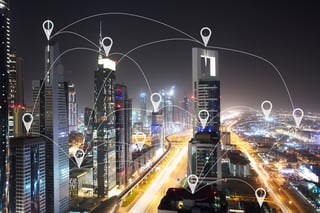The Best Uses for Edge Computing
 While edge computing isn’t a one-size-fits-all solution for every business, the companies and organizations that know how to capitalize on its capabilities stand to see substantial benefits.
While edge computing isn’t a one-size-fits-all solution for every business, the companies and organizations that know how to capitalize on its capabilities stand to see substantial benefits.
With the edge computing market projected to reach over $6 billion in value by 2022 — up from about $1.47 billion in 2017 — it’s clear that this emerging solution is going to play an important role in the future, especially as it relates to IoT technology. By embedding essential data storage and computing into smart devices themselves, edge computing and IoT together have the potential to transform a wide range of industries from healthcare to manufacturing.
For enterprises and organizations considering how they can make the most of edge computing in their networks, understanding practical use cases for this technology is a must. Whether you already have robust IoT deployments in place or you and your IT team are starting from scratch, these field examples of edge computing applications can help you better visualize where it might fit into your digital infrastructure.
1. Interconnected Cities
As the global urban population swells, cities need to leverage promising new technology to make the most of limited space and resources. By integrating IoT devices throughout the physical landscape of urban areas, policymakers, government officials, and tech companies are attempting to make cities more efficient and more responsive to the needs of citizens.
For example, Toronto has recently partnered with Sidewalk Labs, an Alphabet company, to transform 12 acres of the city’s waterfront into an example of what smart cities might one day look like. To do so, the two entities are planning utility channels for robots so that they can move between structures, heating and cooling systems that can tap into utility systems more efficiently, and adaptive traffic signals that know the difference between pedestrians, bikers, and vehicles — just to name a few of the many planned innovations.
With devices embedded in traditionally non-connected urban infrastructure, the project aims to make the area more connected to the needs of the people who live and visit there. Edge computing solutions are being colocated with IoT sensors — to collect, interpret, and distill data into actionable insights and real-time decisions — decisions that could change the future of cities forever.
2. Responsive Hospitals
Edge computing and IoT devices can help healthcare professionals monitor patients around the clock — especially those with serious conditions — via products that can make quicker and more accurate diagnoses. Plus, by shouldering the initial responsibility of data processing, edge computing can make it easier on hospital IT infrastructure to sort through only the most important information.
In addition, edge computing can help healthcare professionals working in rural hospitals collect and act on insightful data. Because traditional hospital databases may not be as dependable in remote areas, edge computing allows doctors, nurses, and staff to gather, store, and interpret information from IoT-enabled medical devices.
3. More Efficient Manufacturing
The industrial IoT (IIoT) has been driving a technological transformation of facilities — especially in the United States. By integrating IoT-enabled devices into heavy machinery in industrial supply chains, stakeholders in the manufacturing space have been able to extract valuable information and gain greater visibility into what were once non-connected processes.
Now, edge computing is turning that data into real-time decision-making that stands to make manufacturing plants more efficient. From determining optimal equipment usage patterns to reduce maintenance requirements to using predictive analytics to anticipate and circumvent historic bottlenecks, when edge computing is integrated into the supply chain, it effects cannot be underestimated.
Going forward, the proliferation of IoT devices throughout the industrial economy will yield greater stores of information than anyone has ever had to organize or analyze. In the manufacturing industry, the use of edge computing to automate decision-making processes on the factory floor will free up professionals to make more qualitative improvements throughout their business — rather than being constantly tasked with putting out fires that edge technologies can handle.
Working with a Qualified Partner
Introducing serious edge computing solutions into your business or organization is a major step forward for any team, but especially so if you’re also new to IoT technology. While tactically deployed IoT devices — connected to edge networks — stand to benefit a wide range of enterprises, knowing what issues you need solved before investing in it is a must.
With nearly thirty years of experience designing, implementing, and monitoring IT infrastructure, Turn-key Technologies (TTI) can help you and your team understand the best way to integrate edge computing into your organization. Are you building your IoT solution from scratch? Are you bringing edge computing into your operation to make better use of the Cloud? Either way, our team can help. If you’re ready to get the conversation started sooner rather than later, let TTI be your go-to resource for all your IT needs.




